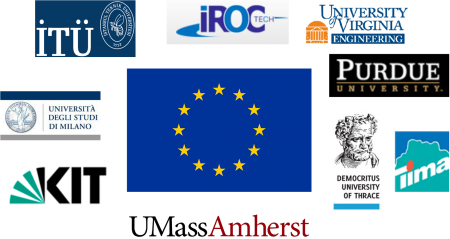Main Page
| (5 intermediate revisions by one user not shown) | |||
| Line 124: | Line 124: | ||
| class="MainPageBG" style="width:50%; border:1px solid #BA55D3; background:#F8F8FF; vertical-align:top;"| | | class="MainPageBG" style="width:50%; border:1px solid #BA55D3; background:#F8F8FF; vertical-align:top;"| | ||
{| id="mp-right" style="width:100%; vertical-align:top; background:#F8F8FF;" | {| id="mp-right" style="width:100%; vertical-align:top; background:#F8F8FF;" | ||
| − | | style="padding:2px;" | <h2 id="mp-itn-h2" style="margin:3px; background:#BC8F8F; font-size:125%; font-weight:bold; border:1px solid #BA55D3; text-align:left; color:#000; padding:0.2em 0.4em;">Project activity news </h2> | + | | style="padding:2px;" | |
| + | |||
| + | <h2 id="mp-itn-h2" style="margin:3px; background:#BC8F8F; font-size:125%; font-weight:bold; border:1px solid #BA55D3; text-align:left; color:#000; padding:0.2em 0.4em;">Project by the numbers, 2015-2019 </h2> | ||
| + | Started in 2015, the project has been successfully completed in 2019 with many achievements including: | ||
| + | |||
| + | * <span style="background:#F5F5F5; font-size: 125%; border:2px solid #B22222;"> 34</span> researchers have been seconded to project partners, performing a total of <span style="background:#F5F5F5; font-size: 125%; border:2px solid #B22222;"> 110,93</span> secondment months. <span style="background:#F5F5F5; font-size: 125%; border:2px solid #B22222;"> 17</span> of them are early stage researchers and <span style="background:#F5F5F5; font-size: 125%; border:2px solid #B22222;"> 9</span> of them are female researchers. | ||
| + | |||
| + | * <span style="background:#F5F5F5; font-size: 125%; border:2px solid #B22222;"> 32</span> peer-reviewed papers contributed by 30 project secondees or partners have been published. <span style="background:#F5F5F5; font-size: 125%; border:2px solid #B22222;"> 12</span> of them are journal papers. | ||
| + | |||
| + | * <span style="background:#F5F5F5; font-size: 125%; border:2px solid #B22222;"> 35</span> dissemination, outreach, and management activities have been performed. | ||
| + | |||
| + | |} | ||
| + | |||
| + | <h2 id="mp-itn-h2" style="margin:3px; background:#BC8F8F; font-size:125%; font-weight:bold; border:1px solid #BA55D3; text-align:left; color:#000; padding:0.2em 0.4em;">Project activity news </h2> | ||
* We present our work "''Nano-Crossbar based Computing: Lessons Learned and Future Directions''" in a premier conference on electronic design automation [http://www.date-conference.com/ DATE 2020]. | * We present our work "''Nano-Crossbar based Computing: Lessons Learned and Future Directions''" in a premier conference on electronic design automation [http://www.date-conference.com/ DATE 2020]. | ||
| Line 186: | Line 199: | ||
<!-- | <!-- | ||
* We publish a book chapter "''Computing with Emerging Nanotechnologies''" in a book [http://link.springer.com/book/10.1007/978-3-319-25340-4 "Low-Dimensional and Nanostructured Materials and Devices"]. --> | * We publish a book chapter "''Computing with Emerging Nanotechnologies''" in a book [http://link.springer.com/book/10.1007/978-3-319-25340-4 "Low-Dimensional and Nanostructured Materials and Devices"]. --> | ||
| + | |||
[[Image:nanoxcomp_logo.png|center|none|300px|link=]] | [[Image:nanoxcomp_logo.png|center|none|300px|link=]] | ||
Latest revision as of 17:25, 7 May 2020
Welcome to the NANOxCOMP Project | |
|
Nano-crossbar arrays have emerged as a strong candidate technology to replace CMOS in near future. They are regular and dense structures, and fabricated by exploiting self-assembly as opposed to purely using lithography based conventional and relatively costly CMOS fabrication techniques. Currently, nano-crossbar arrays are fabricated such that each crosspoint can be used as a conventional electronic component such as a diode, a FET, or a switch. This is a unique opportunity that allows us to integrate well developed conventional circuit design techniques into nano-crossbar arrays. Motivated by this, we aim to develop a complete synthesis and performance optimization methodology for switching nano-crossbar arrays that leads to the design and construction of an emerging nanocomputer. Project objectives are 1) synthesizing Boolean functions with area optimization; 2) achieving fault tolerance; 3) performing performance optimization by considering area, delay, power, and accuracy; 4) implementing arithmetic and memory elements; and 5) realizing a synchronous state machine.
 | |
This project has received funding from the European Union's H2020 research and innovation programme under the Marie Skłodowska-Curie grant agreement No 691178.
|
|
Project activity news
 |



